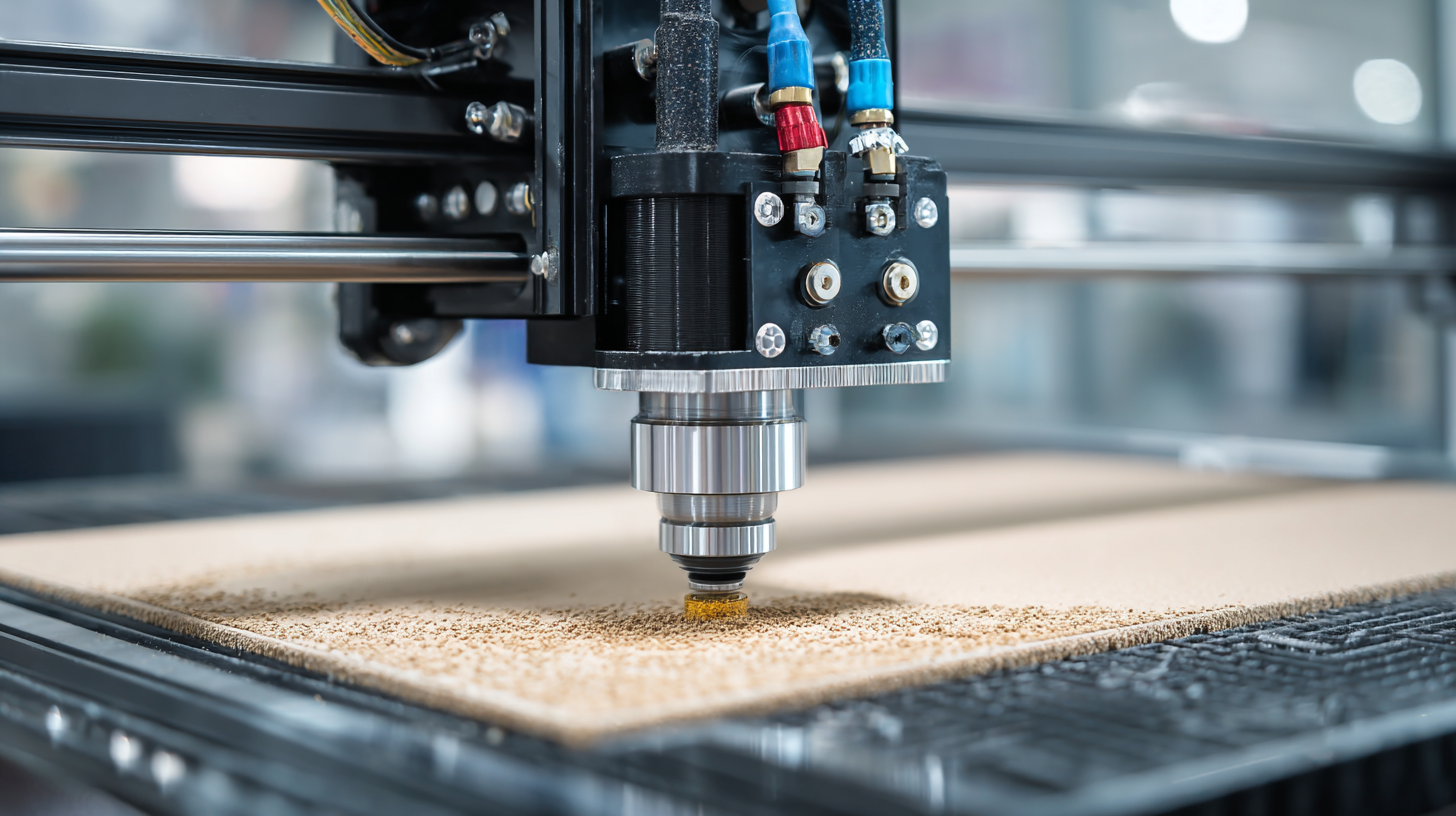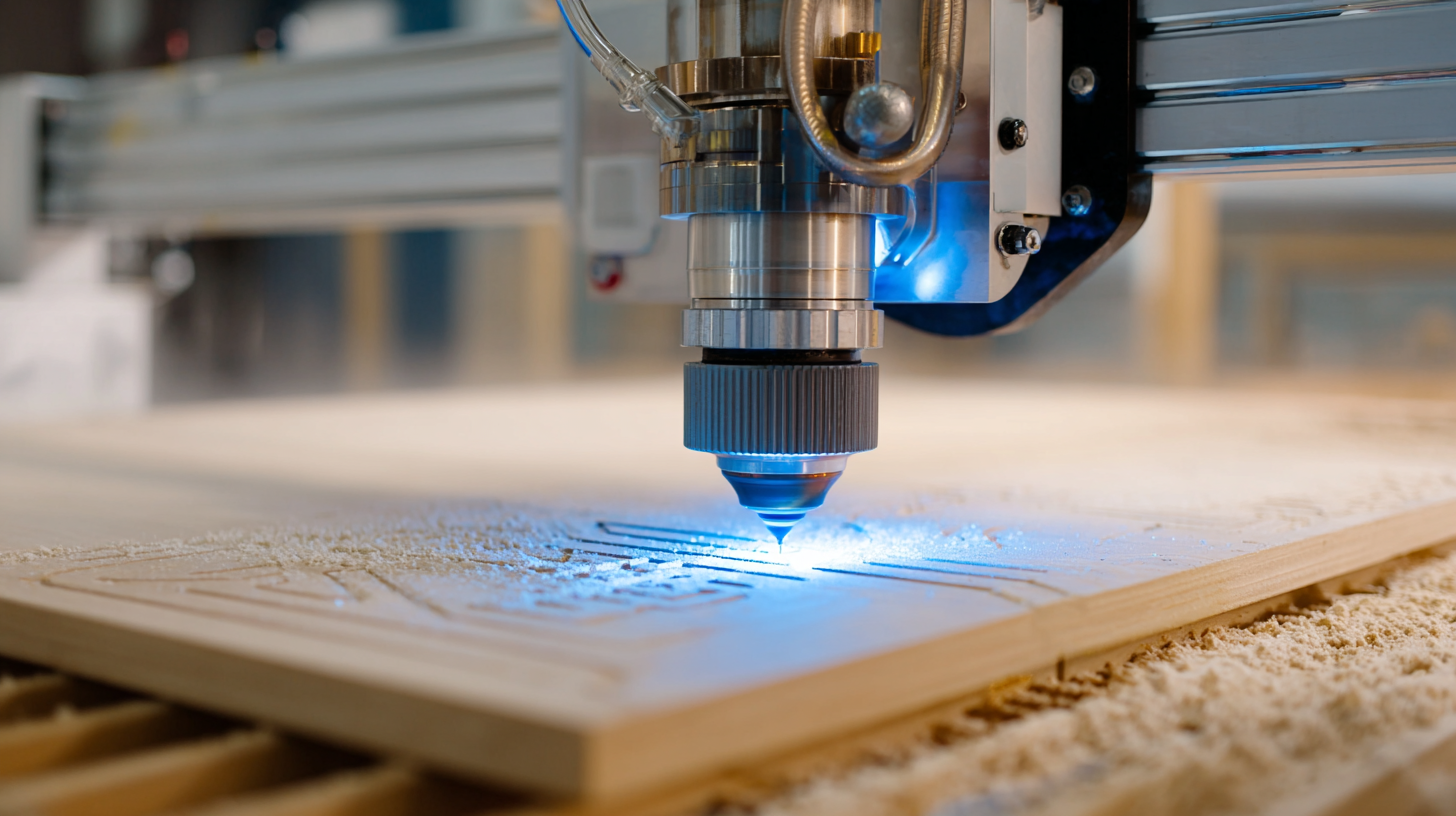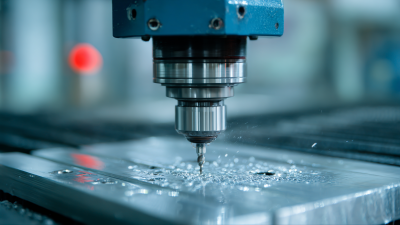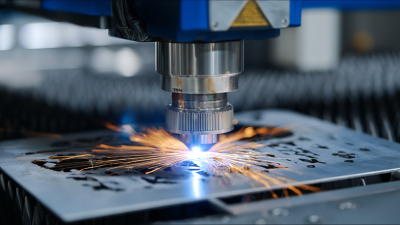The Ultimate Guide to Choosing the Right CNC Router for Your DIY Projects
When embarking on DIY projects that require precision and creativity, selecting the right CNC router can make all the difference. A CNC router is a powerful tool that allows you to transform your ideas into tangible creations with remarkable accuracy. However, with a myriad of options available on the market, the process of choosing the perfect CNC router can be overwhelming, especially for beginners. This guide aims to streamline your decision-making process by providing essential insights and factors to consider when selecting a CNC router tailored to your specific needs. Whether you're planning to craft intricate wood designs, create custom furniture, or engage in metalworking, understanding the features and capabilities of various CNC routers will empower you to make an informed choice. Dive into this ultimate guide and equip yourself with the knowledge necessary to choose the ideal CNC router for your DIY endeavors.

Understanding CNC Routers: Types and Specifications Explained
When selecting a CNC router for your DIY projects, understanding the various types and specifications available is crucial. CNC routers come in several categories, including hobbyist, industrial, and portable models, each tailored to different levels of complexity and material types. For instance, data from industry reports indicate that the global CNC router market size was valued at approximately $1.2 billion in 2022, with a projected annual growth rate of 6.1% through 2030, highlighting the increasing demand and evolution of these machines.
One essential specification to consider is the cutting area. Hobbyist models often range from 12"x12" to 24"x36", suitable for smaller projects, while industrial routers can exceed 5'x10', allowing for larger, more complex tasks. Additionally, the spindle power significantly affects cutting efficiency; routers typically range from 1.5 HP for light materials to 10 HP for heavy-duty operations.
**Tip:** Always match the CNC router's capabilities with your project requirements to avoid overpaying for unnecessary features. Additionally, consider compatibility with various software; most routers support popular CAM software, ensuring flexibility in design execution. By understanding these specifications, you will be better equipped to choose a machine that meets both your expectations and project demands.

Key Features to Look for when Choosing a CNC Router for DIY Projects
When selecting a CNC router for your DIY projects, several key features should be prioritized to ensure optimal performance and versatility. Firstly, the size of the work area is crucial. Depending on the scale of your projects, a larger bed can accommodate more extensive materials, allowing for more complex designs without the need for multiple setups. Additionally, consider the router's spindle power; a more powerful spindle will manage tougher materials and achieve faster cutting speeds, enhancing your productivity.
Another important feature to assess is the type of control system. CNC routers can be operated via manual control, computer-based systems, or a combination of both. Opting for a system that supports user-friendly software can simplify the design process and improve precision. Moreover, look for routers with good community support, which often include tutorials and troubleshooting resources that can aid you during your learning curve. Lastly, investigate the build quality and materials used in construction, as a robust router can withstand the rigors of frequent use, ensuring longevity and consistent results throughout your DIY projects.
The Ultimate Guide to Choosing the Right CNC Router for Your DIY Projects
| Feature | Description | Importance |
|---|---|---|
| Cutting Area | The dimensions of the work area available for cutting. | High |
| Spindle Power | The strength of the spindle motor, measured in watts or horsepower. | High |
| Material Compatibility | Types of materials that can be cut or engraved, such as wood, plastic, and metal. | Medium |
| Precision | The accuracy of the cuts, often measured in millimeters. | High |
| Software Compatibility | The types of software that can be used to program the CNC router. | Medium |
| Ease of Use | How user-friendly the machine is, especially for beginners. | High |
| Build Quality | The durability and sturdiness of the materials used in construction. | High |
| Price | The total cost of the CNC router, including setup and any additional accessories. | Medium |
Budgeting for Your CNC Router: Cost Considerations and Value Tips
When considering the purchase of a CNC router for your DIY projects, budgeting is an essential factor that can shape your choices significantly.
The initial cost of a CNC router can vary widely based on its size, capabilities, and brand. It's important to establish a clear budget before diving into your options, as this will help narrow down the choices and prevent overspending.
Consider not only the purchase price but also any additional expenses such as software, tools, and maintenance. Researching the total cost of ownership will give you a comprehensive view of what is required for your CNC journey.
In addition to initial costs, seeking value tips can further enhance your investment. Look for routers that offer versatility and the ability to handle multiple materials, which can save you money in the long run.
It's also wise to explore used or refurbished models if you're aiming to stay within a tighter budget. Joining online forums or communities can provide insights on deals and recommendations from experienced users.
By carefully evaluating both your financial limitations and the potential of each machine, you can ensure that your choice aligns with your DIY aspirations while maximizing your investment.
Essential Accessories and Upgrades to Enhance Your CNC Routing Experience
When selecting the right CNC router for your DIY projects, considering essential accessories and upgrades can significantly enhance your routing experience. One of the most crucial accessories is a quality router bit set. Investing in a variety of bits tailored for different materials—wood, plastic, and metals—will greatly increase your router's versatility and precision.
Tips: Always opt for high-speed steel (HSS) or carbide bits for better durability and performance. Regularly inspect and replace worn-out bits to maintain clean cuts and improve the overall quality of your work.
Another important upgrade is a robust vacuum system or dust collection unit. CNC routing can generate a significant amount of debris, which not only clutters your workspace but can also impact the performance of your machine. A good dust collection setup will keep your area clean and ensure that the visibility for detailed work remains unobstructed.
Tips: Look for vacuum systems that are specifically designed for CNC machines, as they offer efficient suction and compatibility with other shop tools. Additionally, consider investing in an upgraded workstation or table to provide more stability and support for larger projects. This can make a substantial difference in your routing accuracy and ease of use.
Common Mistakes to Avoid When Selecting a CNC Router for Beginners
When selecting a CNC router, beginners often fall prey to common mistakes that can hinder their projects and waste investment. One prevalent error is underestimating the importance of size and workspace requirements. According to a report by the Association for Manufacturing Technology, nearly 28% of new users find that their initial choice of router does not fit their project demands, leading to frustration and unexpected costs. It's crucial to assess the dimensions of the materials you plan to work with and ensure the router can accommodate those needs.
Another frequent misstep is overlooking the significance of spindle power. Data from industry surveys indicates that approximately 35% of beginners purchase routers with inadequate spindle horsepower for their intended applications, leading to subpar results in cutting and engraving tasks. Selecting a router with sufficient horsepower can make a significant difference in the quality and efficiency of your work. Furthermore, beginners should never underestimate the value of customer support and community resources, as comprehensive guidance can be vital for troubleshooting and optimizing the use of the CNC router. Prioritizing these aspects can save time, enhance project quality, and result in a more rewarding DIY experience.

Related Posts
-

What is the Advantage of Using a CNC Router for Your Business
-

Unlock Unlimited Possibilities with Custom Laser Cutting for Your Unique Projects
-

Emerging Trends in Stainless Steel Laser Cutting Technologies at the 138th Canton Fair 2025 in China
-

Unlocking the Future of Manufacturing Through Laser Machining Innovations and Trends
-

Exploring Laser CNC Innovations at the 2025 China 138th Import and Export Fair
-

Exploring Laser Machining Innovations at China Import and Export Fair 2025

